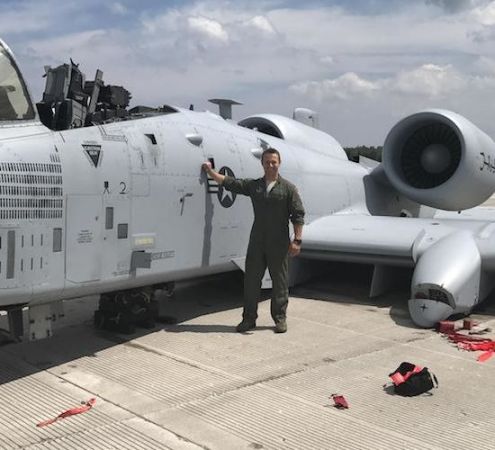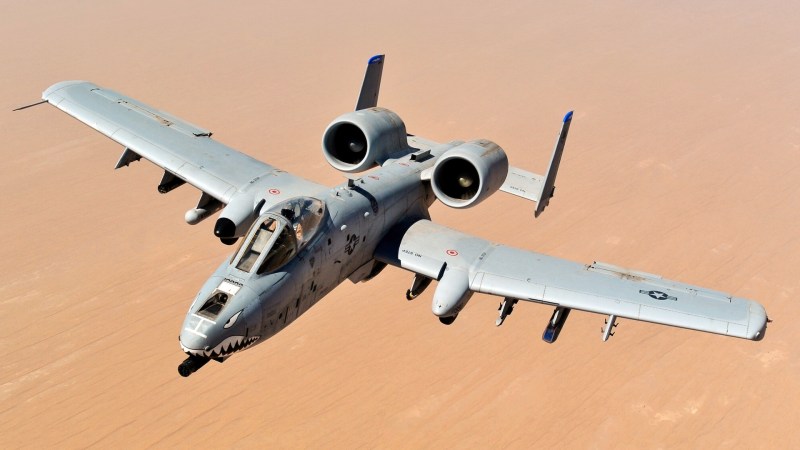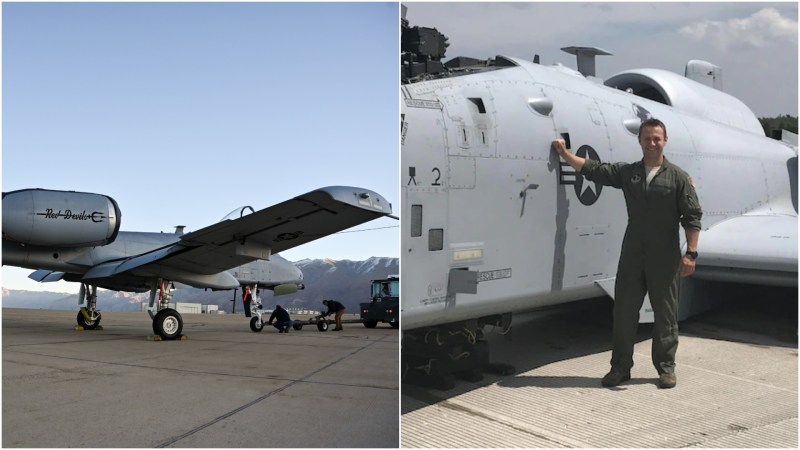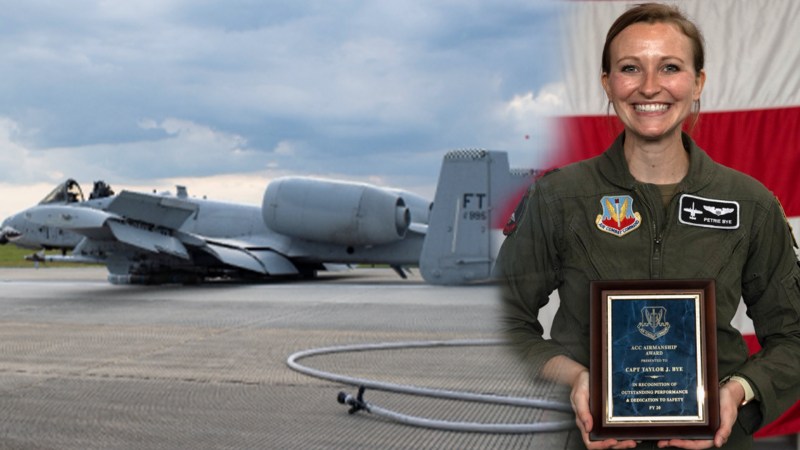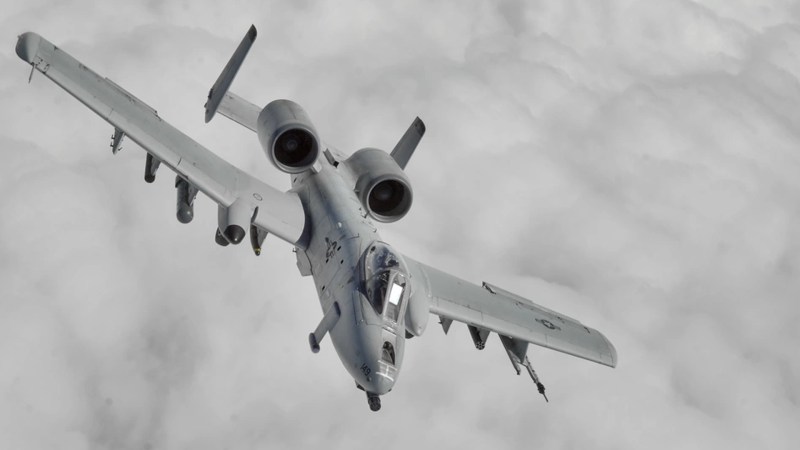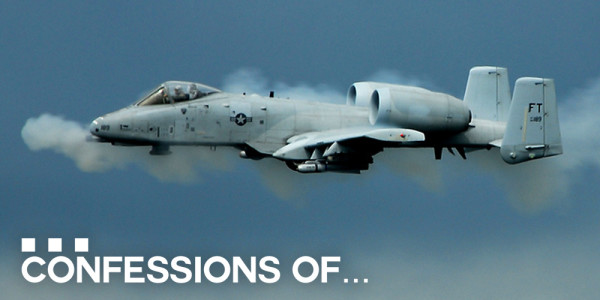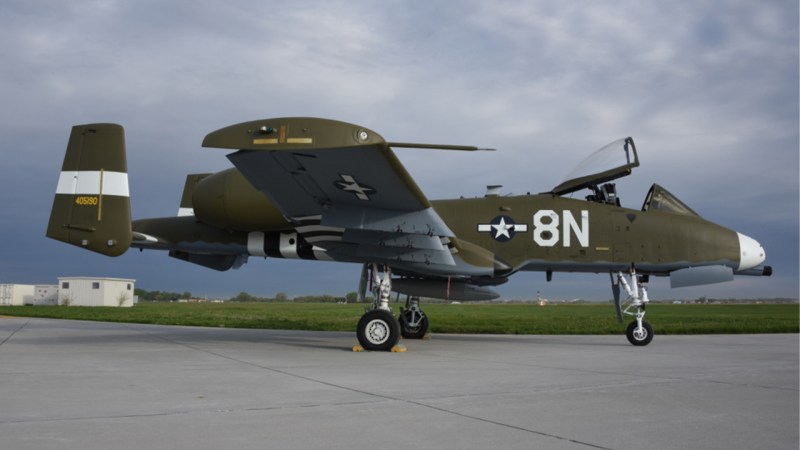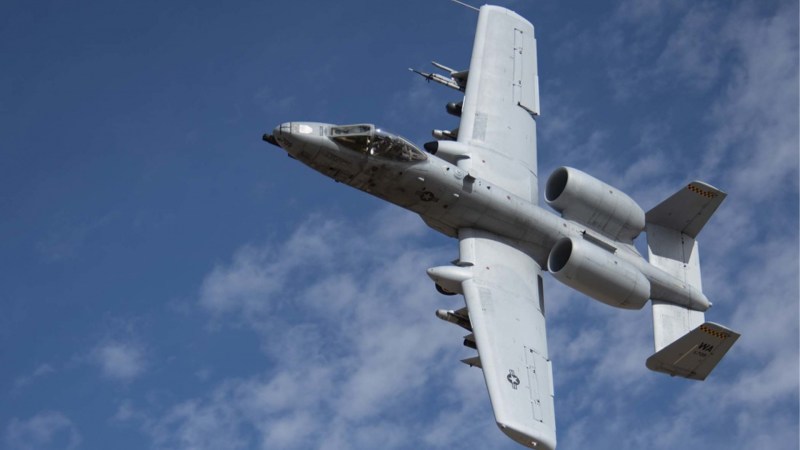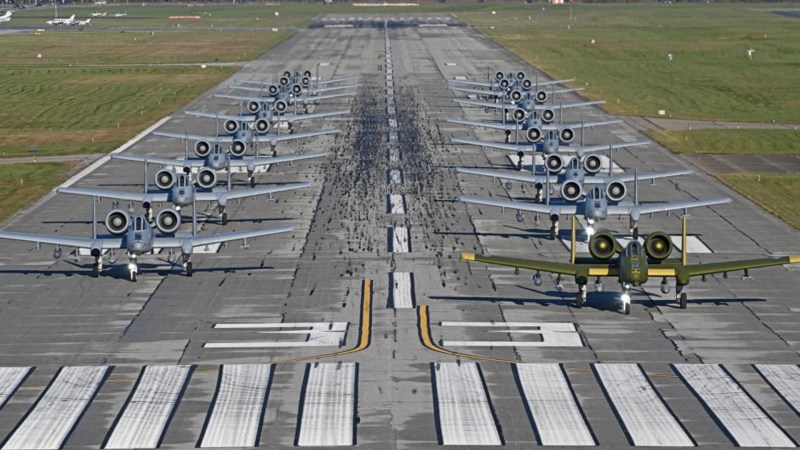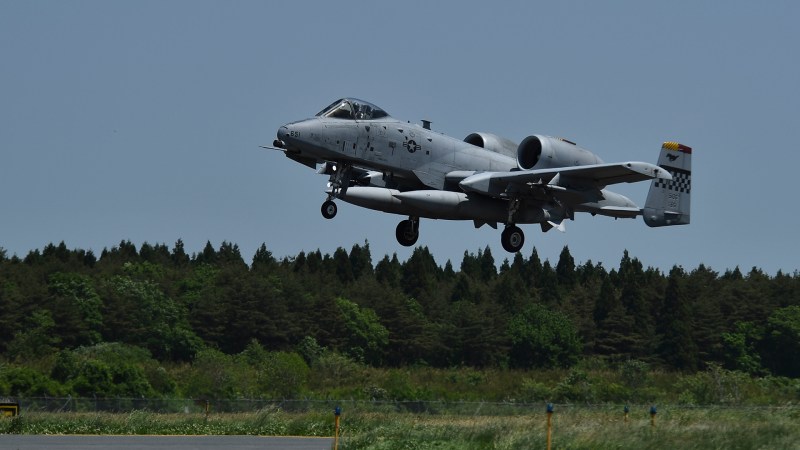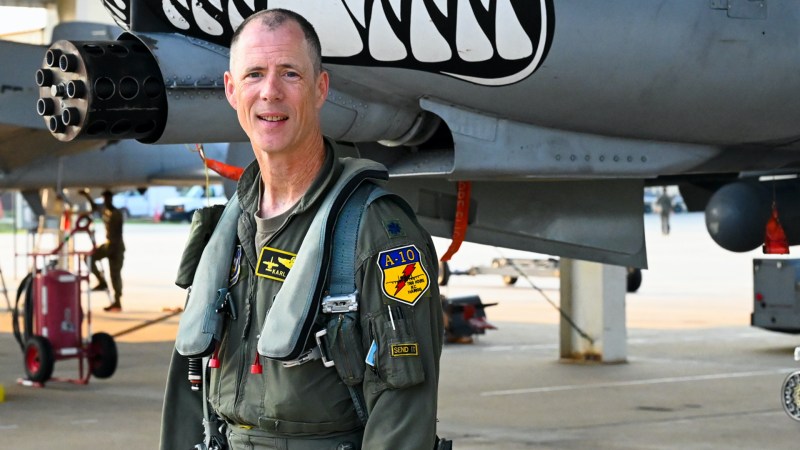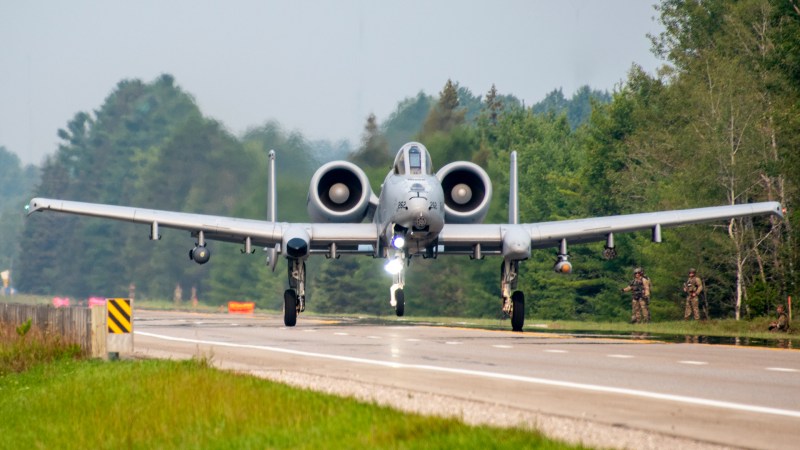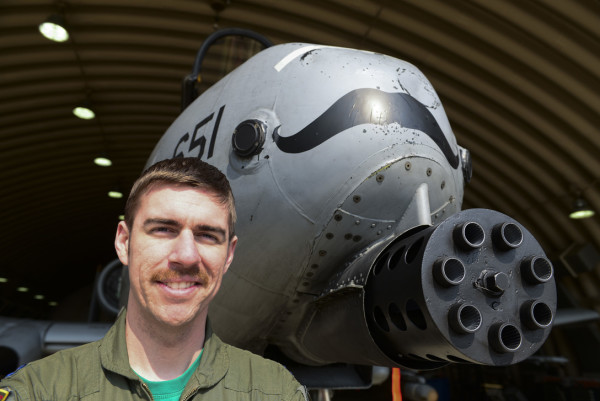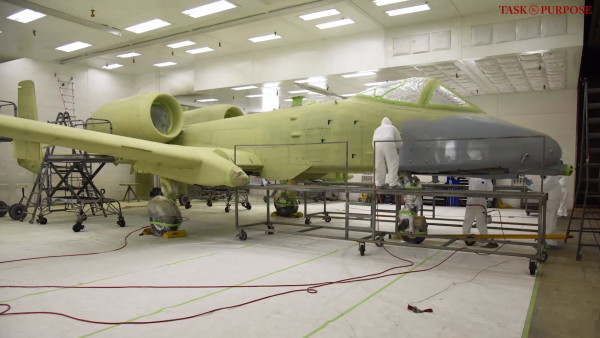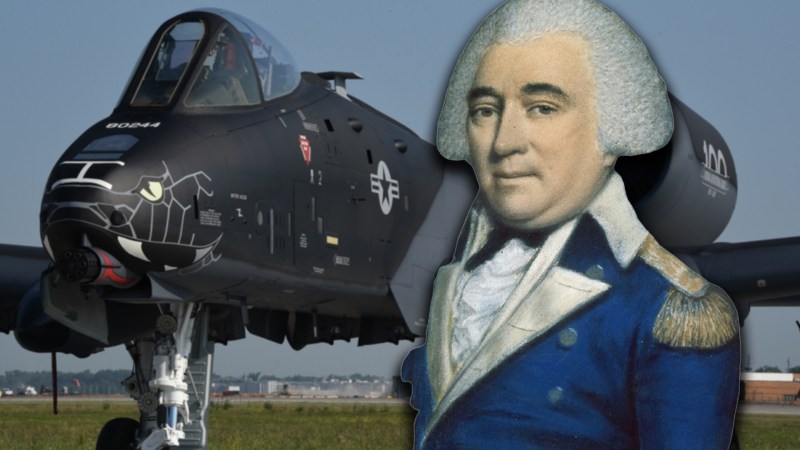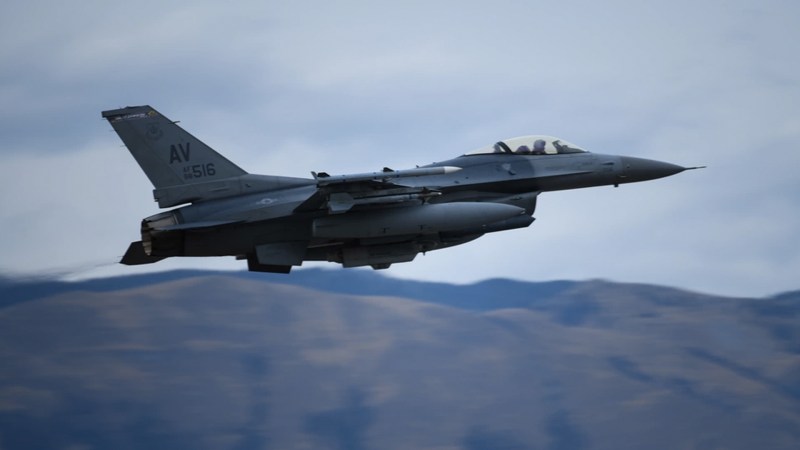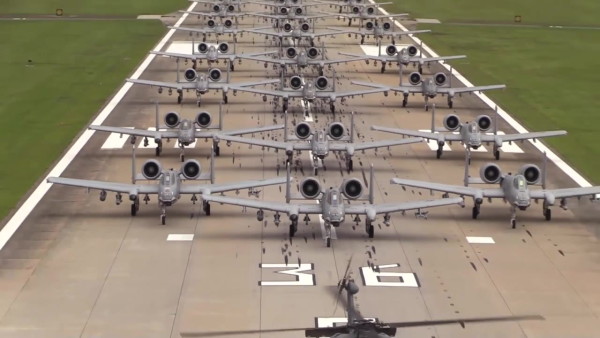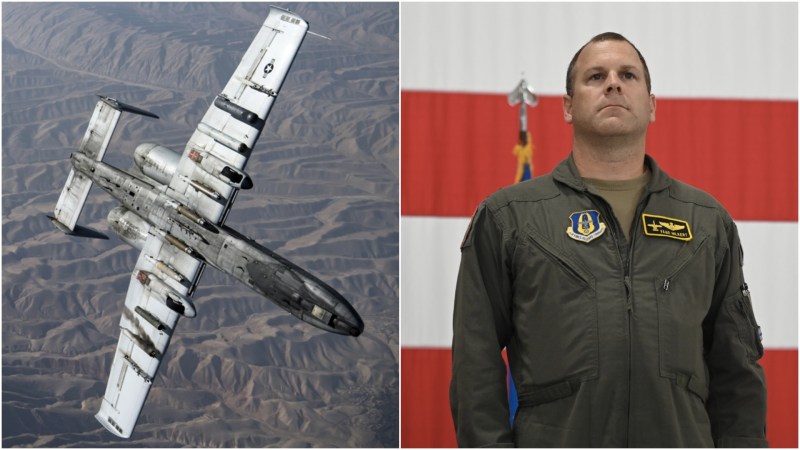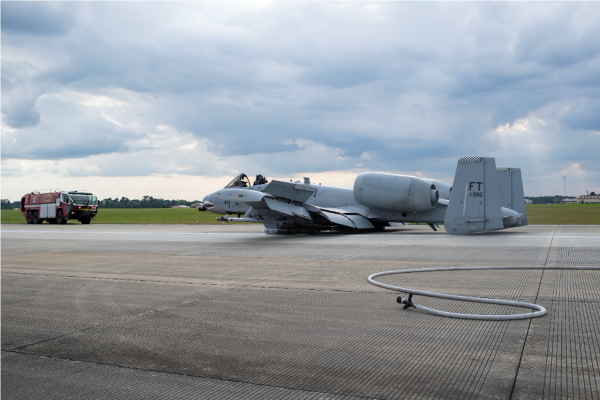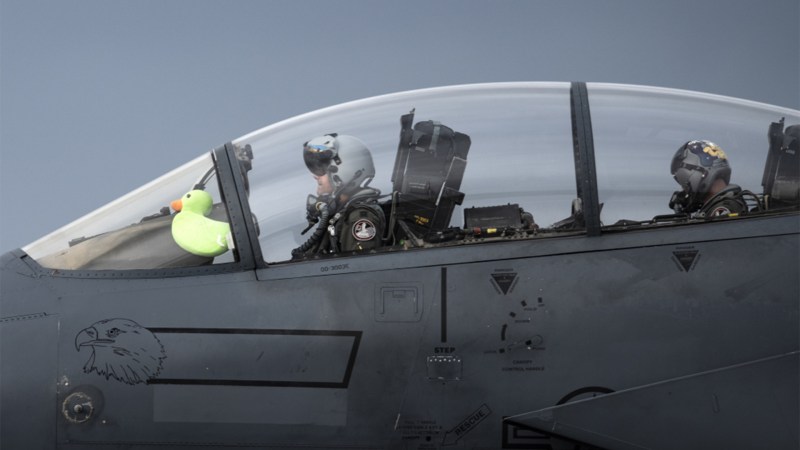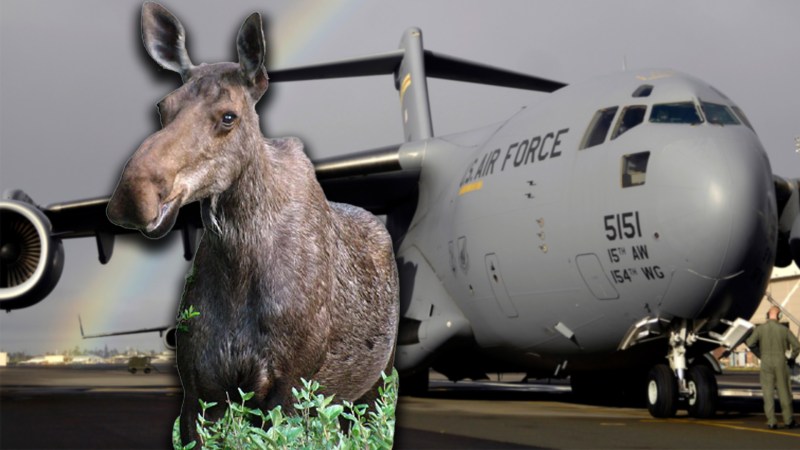Every generation of American warriors gets the iconic aircraft it deserves, from the legendary B-52 Stratofortress to the F-14A Tomcat, and the service members and veterans who answered the call of duty after 9/11 are no exception. But the Fairchild Republic A-10 Thunderbolt II, the workhorse of U.S. close air support in the skies for decades, and lovingly nicknamed “Warthog” by American troops, is more than just an aggro 30mm cannon with wings — it’s the guardian angel of U.S. and partner forces on the front lines of the Global War on Terror in countries like Afghanistan, Iraq, and Syria.
But don’t take our word for it. The stories of troops saved by the timely arrival of an A-10 pilot are enough proof as to why the Thunderbolt II will always be known as the legendary Warthog among American warfighters — and why, for those downrange, it’s in BRRRT! they trust.
That time two A-10 pilots saved a group of surrounded Marines in Afghanistan.
U.S. Air Force

U.S. Air Force Maj. Jeremiah “Bull” Parvin, 75th Fighter Squadron director of operations, poses for a photo in front of his A-10C Thunderbolt II, Jan. 28, 2015, at Moody Air Force Base, Ga.
Cut off from their unit and unable to call in air support from the F/A-18 Super Hornets, six special operations Marines found themselves surrounded by Taliban fighters in the ruins of a dilapidated compound — until two A-10 pilots flew 300 miles to rain down a hail of lead over the span of a four-hour mission, killing dozens of insurgence and earning the Distinguished Flying Cross with Valor.
That time an A-10 pilot wreaked havoc on the Iraqi army.
In the early days of the 2003 invasion of Iraq, then-Capt. Gregory Thornton braved a sandstorm and “an ever-increasing hailstorm of anti-aircraft fire” to carve a path for the 3rd Infantry Division’s 2nd Battalion, 69th Armor Regiment over the Tigris River and on toward Baghdad. Thorton took out three T-72 tanks, six armored personnel carriers, and several utility vehicles, earning a Silver Star in the process. “Captain Thornton repeatedly maneuvered his aircraft to within 3,000 feet of enemy forces to bring his 30-millimeter Gatling gun to bear,” his Silver Star citation reads. “This courageous and aggressive attack, while under withering fire and in poor weather, along with Captain Thornton’s superior flying skills and true attack pilot grit, allowed the Task Force and Armor Battalion to successfully accomplish their objective linking up with coalition forces completing the 360-degree encirclement of Baghdad.”
That time two A-10s took out 23 tanks in a single day.
U.S. Air Force

An A-10A Thunderbolt II aircraft flies over a target area during Operation Desert Storm.
On the second day of Operation Desert Storm’s ground war in 1991, a pair of Warthogs deployed to deal with a column of Iraqi tanks moving south to engage coalition troops. In about 10 minutes, the A-10s, flown by Capt. Eric Solomonson and Lt. John Marks, dispatched six tanks with infrared AGM-65 Maverick missiles and another two with their legendary 30mm cannons.
But rather than return to base, Solomonson and Marks refueled and reloaded for two more sorties in a completely different target area, disabling an additional 15 Iraqi tanks while providing close air support for Marines deployed to rescue the pilots of two downed AV-8B Harriers.
That time an A-10 saved the day in a botched raid in Afghanistan.
U.S. Air Force

An A-10C Thunderbolt II with the 188th Fighter Wing, Arkansas Air National Guard conduct close-air support training Nov. 21, 2013.
In January 2007, a group of British Royal Marines were pinned down in a botched raid on a critical Taliban stronghold on the other side of the Helmand River in southern Afghanistan, stymied by resilient insurgents and early casualties in what should have been a relatively simple operation. But the worst part came during their retreat: the British realized they’d left a wounded lance corporal behind.
Help was on the way. Two American A-10 pilots hastily retasked to provide overwatch alongside a B-1 bomber while the Royal Marines, literally strapped to the side of two Apache helicopters, would return across the river to snag the wounded lance. Not only did the A-10s unleash the usual firestorm, but countermanded the B-1’s initial bombing run — preventing the latter from accidentally bombing friendly positions due to the fog of war.
That time an A-10 broke its nose — and kept on flying.
U.S. Air Force

An A-10C Thunderbolt II pilot from the 75th Fighter Squadron taxis down the runway prior to take off, April 28, 2017, at Moody Air Force Base.
An April 28 Air Force photo shows a Warthog, poised for takeoff to participate in a training operation at Moody Air Force Base in Georgia, with a giant gent in its nose, picked up during an unfortunate run-in with a KC-135J boom during an aerial refueling. The reaction of the maintenance crews to the potentially troubling damage was to shrug it off — a testament to the remarkably robust design that’s made the Warthog a mainstay of the Air Force fleet.
The A-10 pilot who made a belly landing without landing gear or a canopy.
U.S. Air National Guard

Capt. Brett DeVries, an A-10 Thunderbolt II pilot of the 107th Fighter Squadron from Selfridge Air National Guard Base, poses next to the aircraft he safely landed after a malfunction forced him to make an emergency landing July 20 at the Alpena Combat Readiness Training Center.
While lining up his A-10 for landing during a routine training mission in July 2017, Capt. Brett DeVries of the Michigan Air National Guard’s 107th Fighter Squadron, a massive cannon malfunction blew the canopy of his aircraft clean off. With 325-knot winds slamming into him, DeVries found both his primary and backup radios inoperative and front landing gear jammed, forcing him to attempt a ballsy belly landing — from which he walked away without a scratch. And despite all of this, the aircraft was deemed repairable — yet another testament to the A-10 airframe’s unparalleled durability.
Finally, that time the A-10 made a clean landing after a direct hit from a missile.
U.S. Air Force

A-10s of the 23d Fighter Group shut their engines off after a mission in support of Operation Dynamic Weasel.
During Operation Desert Storm, then-Capt. Paul Johnson took an enemy missile directly to the right wing of his A-10, disabling one of the aircraft’s hydraulic systems. Despite the damage, Johnson managed to safely land his Warthog, returning to the skies days later. Of course, this is also a testament to Johnson’s legendary skills as a pilot: Just days earlier, Johnson had led a six-hour search mission for a downed F-14 Tomcat pilot through “through three aerial refuelings, one attack on a possible SCUD missile site, and three hours of going deeper into enemy territory than any A-10 had ever flown,” according to We Are The Mighty. But even the best pilot is only as good as the plane he’s flying — and only the A-10 could’ve helped Johnson pull off such impressive moves.
BBMC Mortgage aims to honor a military veteran family by paying their home mortgage for an entire year. What would you do without a mortgage payment for a year?

